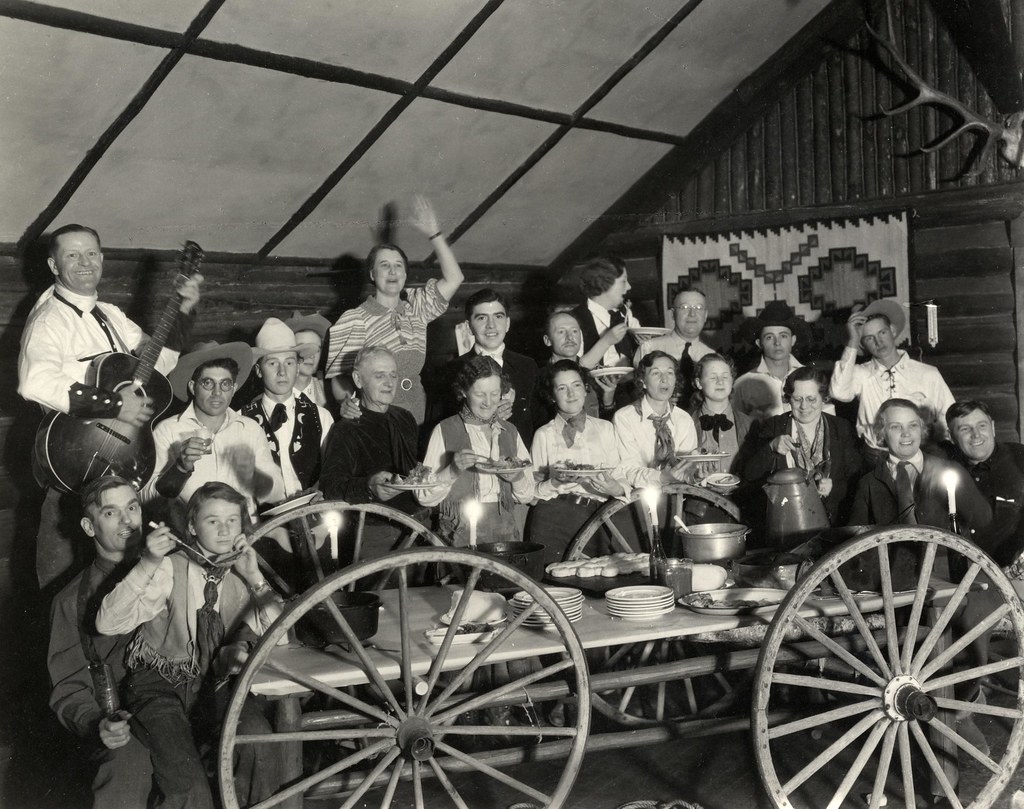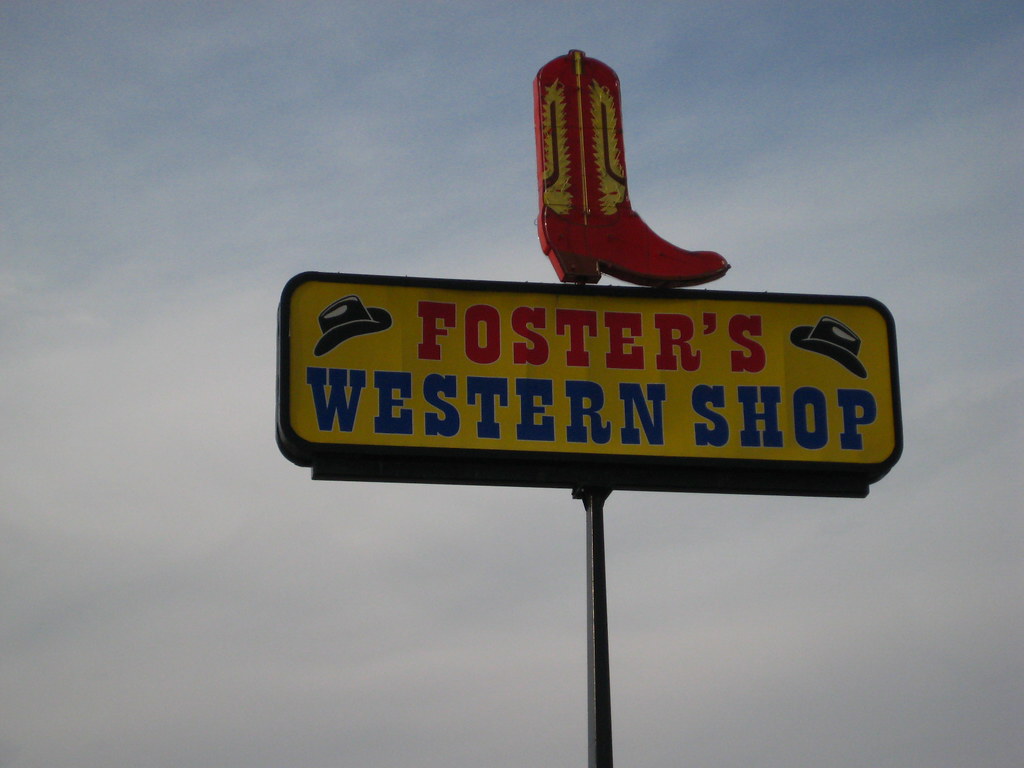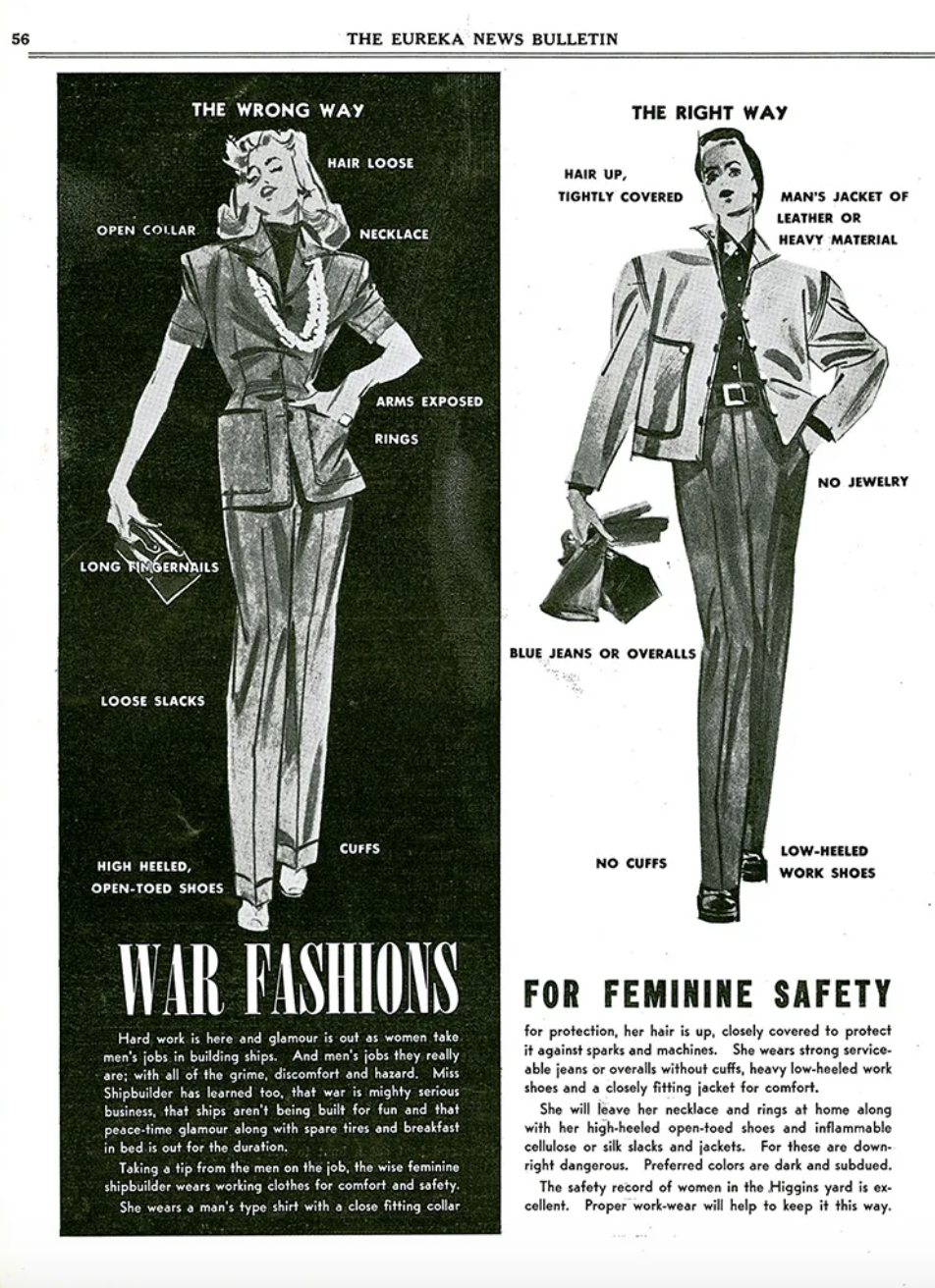From Workwear to Runway
Living on the edges of what is defined as fashion, denim occupies a unique space. It is forever deemed casual wear, seen inappropriate for country club attire, yet sexy enough to be featured on top fashion runways. It’s integral to pop culture, with songs about Apple Bottom Jeans blaring in night clubs and celebrities and actors starring in denim campaigns. Yet, it did not start out this way.
Selling an Illusion: Western Wear & Dude Ranch Aesthetics
Reiterating the history, jeans were originally workwear clothes made for their practicality not fashionability. They were not generally accepted as something worn by upper classes, and really only made strides in the fashion industry when Wrangler started advertising dude ranch attire for wealthy men and women. Dude ranches or guest ranches were places where upper class families could leave the realities of the working world and escape to the American West. Starting in the late 1800’s, ranchers began opening up their ranches to city folk from the east coast. Wrangler, Levi’s and Lee began advertising this western escape story in the 1950’s, using cowboys and rodeo stars as inspiration. These advertisements sold an experience, and made jeans socially acceptable for women and men. Yet, denim still lived within a structured realm. They weren’t advertised for everyday wear, but advertised for certain places and people. Jeans lived within the confines of western wear and vacation attire. Dude ranches represented a break from the real world, a place where one could try out being a cowboy, and lean into a fictional character. In a way, these people were buying into a place where they could be someone else for a week, and have a true American experience. The jeans were just the costumes necessary to the act, and people bought into the look. In juxtaposition to the original working class need for denim, these ranches were in a way making a vacation out of a romanticized working experience of a ranch wrangler. Of course people worked diligently to make these ranches function, but the vacation guests were simply reaping the benefits, enjoying the landscape around them and the experience that was created for them. These trips privileged the upper class, as most guests traveled from afar to take a week or more off of work to enjoy the great outdoors. These ads showed white men and women surrounded by horses and barns, decked out in flannels, cowboy hats, and blue denim.
Images below selected from WordPress creative commons. Image on left depicts vacationers enjoying a dude ranch meal dressed in denim and western wear. Image on top right depicts signage of a western wear shop. Image on the bottom right advertises stretch denim which included nylon and cotton threads illustrating the changes made in denim production over time.
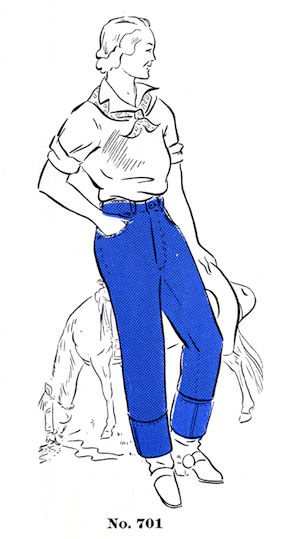
The Rise of Lady Levi’s
Before these guest ranches, jeans were not socially acceptable for women. It was not until 1934 when Levi’s put out a line named “Lady Levi’s” that denim for women inserted itself into fashion. Once again, these jeans were marketed as leisure wear, ideal for vacations or dude ranches. They lived within the realm of leisure, and were not considered the correct thing to wear outside of these ranch and vacation settings. With the uprisings in ranch vacations and the creation of “Lady Levi’s” denim began occupying more space in the fashion industry, yet only for wealthy white vacationers (levistrauss.com). These ads depict the same kind of people again and again, and serve as guides for acceptable dress at the time. Appropriating what was once worn for laborers working in gruesome conditions, jeans were now part of a western dress up and served as portals to the world of leisure. This line of denim also gave women the chance to wear pants, something rare for the time period. It marks a shift in leisure wear for women, and reveals the gendering of garments for marketing purposes.
Image on the right depicts advertisement for Lady Levi’s. Sourced from WordPress creative commons.
Jeans and Women’s Work
Before innovations such as “Lady Levi’s,” women were still wearing jeans, yet within certain confines. This brings up the important era of women taking on industrial jobs during World War II. During this time period, “roughly 6.7 million additional women went to work during the war, increasing the female labor force by almost 50 percent” as women started taking on jobs in factories and ship building facilities (Rose 673). This new space that women were occupying outside of the home brought on new clothes and styles. Advertisements for work wear began appearing, tethering denim with ideas of safety, and how women needed to change their style to fit the new conditions. Once again, jeans fit only within a certain confine, and were deemed strictly additions to shifting environments. These ads served as guides for how women needed to change with the evolving world around them. Taking on what was once deemed as masculine jobs meant wearing clothes that fit these spaces. In order to occupy these spaces, women needed to change their look. In a way, these clothes were justified by equating them to safety measures that women must take into account if accepting these jobs. It was not considered fashion as much as it was considered necessary to the changing tides of work.
Image at top right depicts an advertisement for women’s workwear fashion circa WWII. Emphasis is placed on garments that provided safety while conducting factory work. Image courtesy of the National Archives of Atlanta.
Denim and Pop Culture
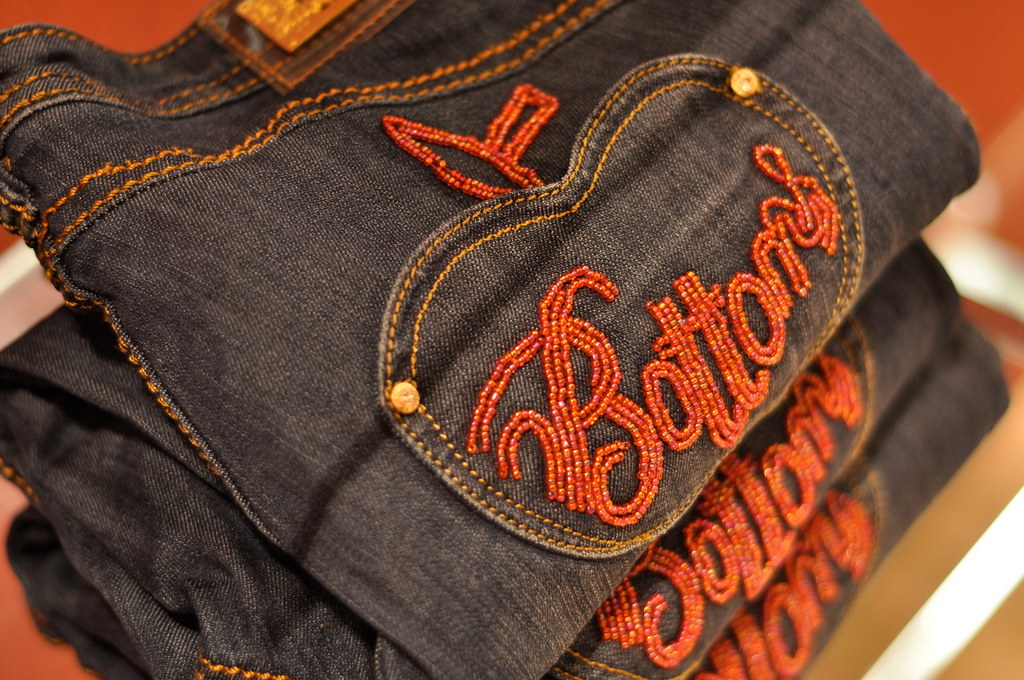
Apple Bottom Jeans
Early 2000s designer jeans dominated pop culture. The song “Low” by American rapper Flo Rida featuring T-pain includes the street wear brand Apple Bottoms. The famous verse “apple bottom jeans, boots with the fur” has infiltrated pop culture and continues to be played in clubs today. Image sourced from WordPress creative commons. Titled “Apple Bottom Jeans” by Jason Bagley.
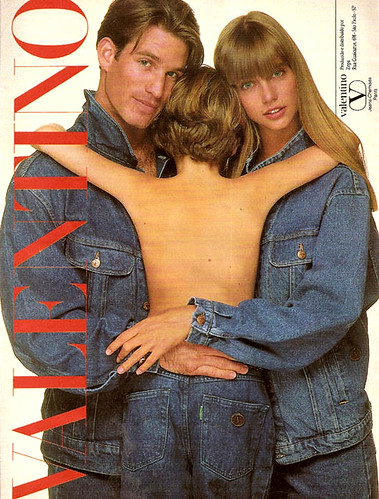
Luxury Denim
This Valentino advertisement features denim jackets and jeans illustrating the impact of denim on luxury fashion houses.
Image sourced from WordPress Creative Commons, credit to author Luiz Reis.
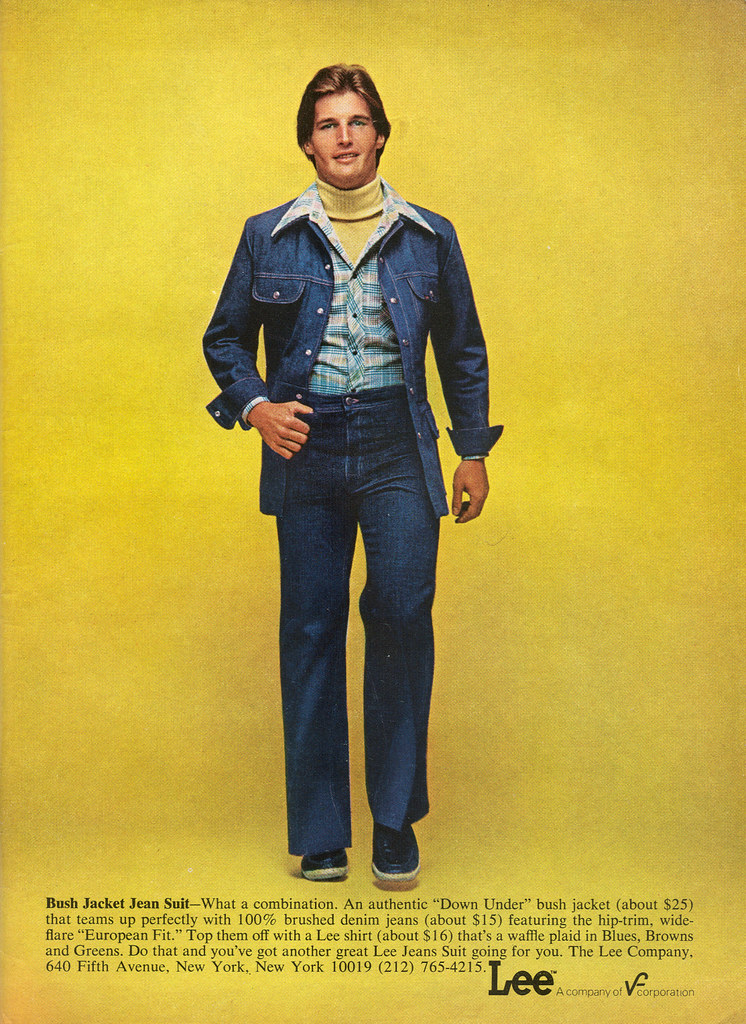
Denim Ensembles
This 1975 advertisement for Lee offers a full denim look paired with a flannel and sun yellow turtleneck.
Image sourced from WordPress Creative Commons, credit to author rchappo2002.
